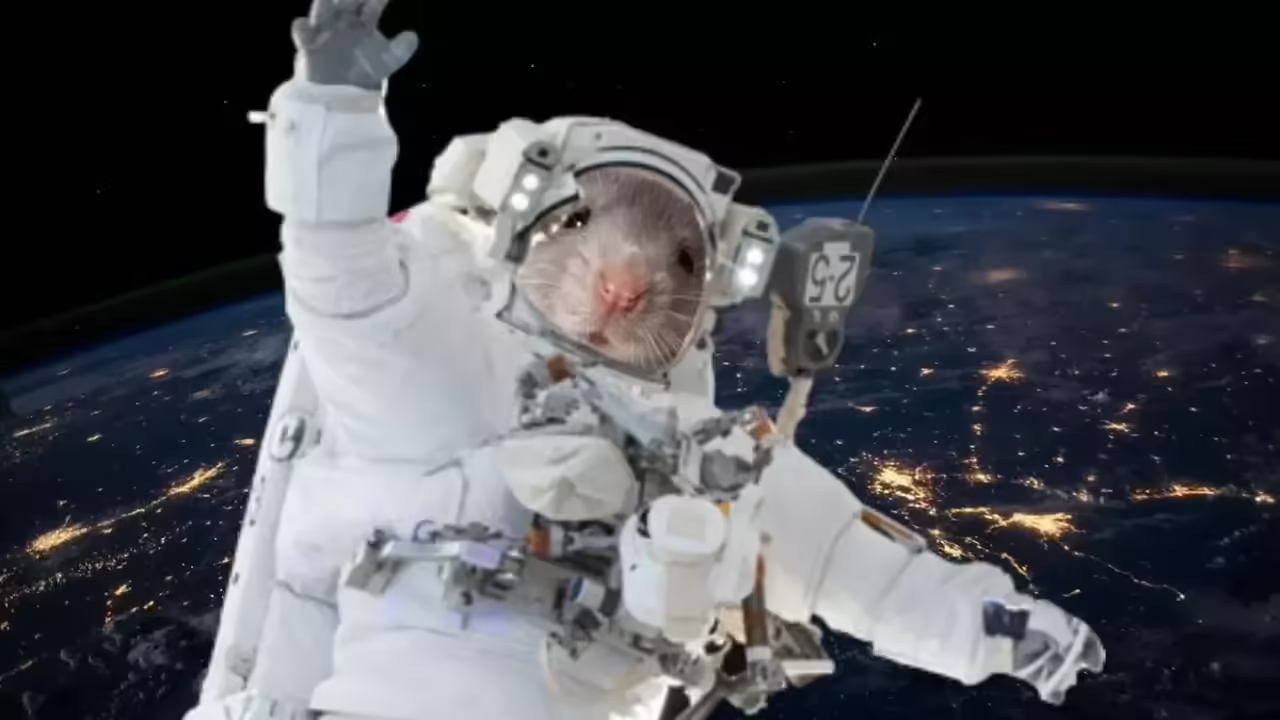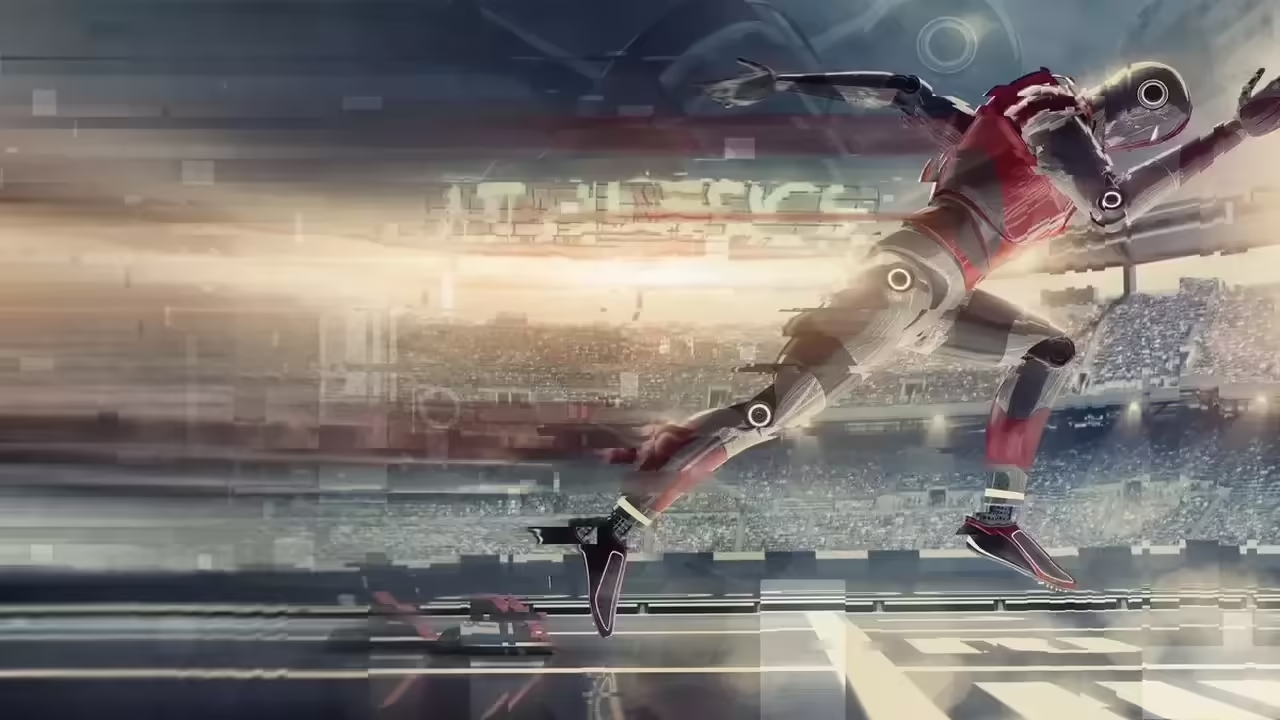
Long-duration space travel poses a number of challenges for astronauts, including exposure to cosmic radiation, lack of gravity, and limited resources. To address these issues, scientists are exploring the possibility of inducing hibernation in astronauts during extended space travel. Hibernation, a state of metabolic torpor, could reduce physiological demands and preserve vital resources. In this search, mice have become a valuable experimental model to understand the mechanisms of hibernation and how they could be applied in humans.
Hibernation on Earth:
Hibernation is a phenomenon observed in several terrestrial species, where animals reduce their metabolic activity and enter a state of almost complete suspension. During hibernation, the heart rate slows, the body temperature drops, and the need for oxygen and nutrients is significantly reduced. This adaptation allows animals to survive in extreme conditions, such as food shortages and low temperatures.
Hibernation in Space:
Hibernation could be a promising strategy for long-duration space travel. By inducing hibernation in astronauts, the need to consume large amounts of food and water could be reduced, as well as the loss of bone and muscle mass caused by lack of gravity. Furthermore, the negative effects of cosmic radiation could be mitigated, since exposure would be reduced during the hibernation period.
The Role of Mice in Space Research:
Mice have been widely used in space research due to their genetic and physiological similarity to humans. In recent studies, scientists have succeeded in inducing hibernation in mice in controlled environments. These experiments have provided valuable information on the metabolic changes, immune response, and neuroprotective mechanisms associated with hibernation.
Research with hibernating mice in space has revealed promising data. Mice have been found to survive lethal radiation exposures while in a hibernating state. Furthermore, upon awakening from hibernation, the mice have shown rapid recovery and an ability to perform normal cognitive tasks. These findings support the idea that hibernation could be an effective strategy to protect astronauts during extended space missions.
Challenges and Future Applications:
Although hibernation in space shows great potential, there are still scientific and technical challenges to overcome. One of the challenges is to develop safe and reliable methods to induce and control hibernation in humans. In addition, further research will need to be done on the long-term effects of hibernation on the human body and how to minimize possible associated risks.
Despite these challenges, hibernation in space could have a number of future applications. For example, on long-duration space exploration missions, such as a trip to Mars, hibernation could significantly reduce the amount of supplies needed and travel time, increasing mission efficiency and viability. Furthermore, hibernation could allow exploration of remote or inhospitable places on other planets, where survival and safe return could be more difficult without this strategy.
Research with mice and other animal models remains crucial to understanding the mechanisms underlying hibernation and its applicability in humans. These studies will help develop safe hibernation induction protocols and identify potential physiological and medical implications associated with this state.
Behavioral Studies: Exploring Behavioral and Psychological Effects on Astronauts through Mouse Models
Life in space poses a number of challenges for astronauts, not only on a physical level, but also in terms of their mental and emotional well-being. Exposure to microgravity, social isolation, and intense cognitive demands can have a significant impact on astronauts’ mood, cognition, and social interaction. To better understand these effects, scientists have turned to mouse models to study the psychological and behavioral changes associated with the space environment.
Exposure to microgravity is one of the hallmarks of the space environment. Studies in mice exposed to microgravity simulations have revealed changes in their behavior. For example, mice in microgravity have been observed to show decreased locomotor activity, indicating a reduction in motivation and ability to move. Furthermore, disturbances in the circadian rhythms of mice have been reported, suggesting that the lack of a regular day-night cycle in space may affect their internal biological clock.
Mood can also be affected in the space environment. Studies in mice have shown changes in neurotransmitter levels and gene expression related to emotional regulation in response to microgravity. These changes may be related to the appearance of symptoms similar to depression and anxiety in the mice.
Cognition is another crucial aspect that is affected in space. Studies in mice have revealed that exposure to microgravity can impair cognitive function, such as spatial memory and learning ability. These effects may be related to changes in brain structure and function, including synaptic plasticity and neurogenesis.
Social interaction is also critical to astronaut well-being. Lack of social contact and prolonged isolation can have negative consequences for mental and emotional health. Studies in mice have shown that social deprivation and isolation can trigger changes in social behaviour, such as reduced social interaction and the development of depressive-like behaviours.
Studies with mice provide valuable information on psychological and behavioral effects in the space environment. The genetic and physiological similarity between mice and humans allows these findings to be extrapolated to astronauts and provides important insights in addressing the psychological and emotional challenges they face in space.
These mouse studies help to understand the underlying mechanisms of behavioral changes and provide relevant information for the development of countermeasures and psychological support strategies for astronauts. Furthermore, these findings may also have applications on Earth, as they may shed light on neurobiological mechanisms and therapeutic interventions for psychological and emotional disorders in the general population.
Studying mice in the spatial context also offers opportunities to investigate interventions and strategies that can mitigate negative effects on mood, cognition, and social interaction. For example, research has been done with environmental enrichment in mice in space, providing additional stimuli and activities to counteract isolation and lack of sensory stimulation. These studies have shown improvements in the social and cognitive behavior of mice, suggesting that similar interventions could be beneficial for astronauts.
In addition, mouse studies can help identify specific biomarkers that indicate the presence of psychological and behavioral changes in astronauts. These biomarkers could be used to monitor and assess the psychological well-being of astronauts during space missions and to develop early detection and medical care strategies.
As we move towards long-duration space missions, such as trips to Mars, understanding and addressing the psychological and behavioral effects on astronauts becomes increasingly crucial. Mouse studies continue to be a valuable tool for investigating and understanding the complex psychological and behavioral issues in space, and for developing interventions and strategies that promote the emotional well-being of astronauts.
Spatial Physiology in Mice: Understanding the Changes and Counteracting the Effects
Exposure to the space environment has a significant impact on the physiology of living organisms, including mice. Studying physiological changes in mice in space not only provides valuable insight into how the body adapts to microgravity, but also offers important insights for understanding and countering the effects in human astronauts.
One of the prominent physiological changes seen in space mice is loss of muscle and bone mass. Microgravity disrupts the loading and mechanical stress mechanisms that normally maintain the integrity of the musculoskeletal system. Mice in space experience decreased muscle mass and bone density, similar to the effects seen in astronauts. These findings highlight the importance of developing countermeasures to preserve musculoskeletal health during prolonged space missions.
Another system affected by microgravity is the cardiovascular system. Mice exposed to microgravity conditions show changes in cardiovascular function, such as a decrease in the pumping capacity of the heart and alterations in the distribution of body fluids. These changes can lead to problems regulating blood pressure and an increased risk of cardiovascular disease. Understanding the mechanisms behind these changes in mice is crucial to developing cardiovascular protection strategies for astronauts.
The immune system is also affected in the space environment. Studies in mice have revealed alterations in the immune response, such as changes in white blood cell function and increased susceptibility to infection. Decreased severity can compromise the immune system’s ability to fight pathogens and maintain homeostasis. These findings highlight the importance of developing interventions to maintain a healthy immune system in astronauts during space missions.
Studies with mice in space make it possible to compare and contrast the physiological changes observed in them with the effects observed in human astronauts. This comparison is crucial to validate the mouse models and to extrapolate the findings to human physiology in space. In addition, mice offer the advantage of being a species with a shorter lifespan, making it possible to study the long-term effects of exposure to the space environment in a more manageable period of time.
Understanding and counteracting the physiological effects of exposure to space is critical to ensuring the health and well-being of astronauts during prolonged space missions. Mouse studies play a crucial role in this area, as they allow investigation of underlying mechanisms, development of interventions, and evaluation of their efficacy in the process of counteracting negative effects on physiology.
Nutrition and Metabolism: Key to the Health of Hibernating Mice and Astronauts in Space
Nutrition and metabolism are critical both for mice during hibernation and for astronauts during extended space travel. Understanding the processes related to feeding and metabolism in mice can provide valuable information for developing dietary strategies and nutritional supplements that maintain the health of astronauts in space.
During hibernation, mice undergo a significant change in their metabolism to adapt to reduced food availability and cold temperatures. During this period of prolonged inactivity, the mice’s basal metabolism drops dramatically, allowing them to conserve energy and maintain their body mass. This process may be relevant to astronauts in space, where resources are limited and optimal energy efficiency is required.
In the context of prolonged space travel, the quality and quantity of food consumed must be taken into account. It is essential to design a diet that provides all the nutrients necessary to maintain astronauts’ health. Hibernating mice rely on their fat stores for energy, so a high-fat, low-carbohydrate diet can be beneficial in maintaining metabolic health during the period of inactivity. However, it is important to balance this with the specific nutritional requirements of astronauts, such as the need for protein to preserve muscle and bone mass.
In addition to diet, nutritional supplements can play a crucial role in astronaut health. During hibernation, mice use their fat reserves efficiently, which may be related to the production of ketone bodies. Ketone bodies are lipid-derived compounds produced during ketogenesis, a metabolic process that occurs in the absence of carbohydrates. These compounds can be an alternative source of energy for the brain and other tissues during hibernation. Investigating how nutritional supplements that promote ketogenesis may benefit astronauts in space could be a promising line of research.
Another aspect to consider is micronutrient intake. During hibernation, mice reduce their metabolic activity and energy expenditure, which can affect nutrient absorption and utilization. Ensuring an adequate supply of vitamins, minerals and antioxidants is essential for maintaining the health and function of the organism. Investigating the specific micronutrient needs during hibernation and how they relate to the requirements of astronauts in space can help design customized nutritional supplements.







